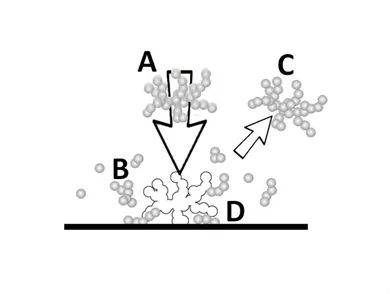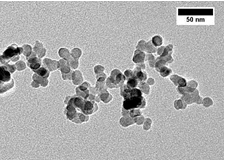The inertial impaction of nanosize agglomerates was investigated. The study focused on two processes that occur commonly simultaneously during the impaction of the agglomerate; bounce and fragmentation. The main objective was to study how different parameters affected these processes. The parameters that were considered included the impaction velocity, agglomerate properties, such as the composition and primary particle size, and impaction surface material.
A measurement system to study the impaction of an agglomerate was designed. It included a size classifier, a multi-orifice impactor, and a custom low-pressure sampling chamber which was utilized for the collection of the bounced particles. The fragmentation was defined by comparing the size of the agglomerates before and after the impaction. The mass balance before and after the impaction was also estimated to find out the fraction of the bounced particles.
The agglomerate properties had an effect on their impaction behavior. For example, the bounced fraction decreased but the fragment size did not change notably as the primary particle size was decreased. Enhanced degree of sintering increased the fragment size due to stronger bonds between the primary particles. At the lowest impaction velocity, a considerable fraction of the agglomerates bounced without fragmentation at the lowest impaction velocity in most cases.
The agglomerate properties had an effect on their impaction behavior. For example, the bounced fraction decreased but the fragment size did not change notably as the primary particle size was decreased. Enhanced degree of sintering increased the fragment size due to stronger bonds between the primary particles. At the lowest impaction velocity, a considerable fraction of the agglomerates bounced without fragmentation at the lowest impaction velocity in most cases.
An important observation was that the bounce fraction did not increase with the increasing impaction velocity in every case. This was probably due to increased adhesion between the agglomerate and the surface that arises from the fragmentation. In addition, the fragmentation process reduces the energy available for the bounce.
This work was a collaboration between PSI and University of Eastern Finland, Kuopio. The results have been reported in the PhD thesis of Mika Ihalainen:
PhD Thesis
This work was a collaboration between PSI and University of Eastern Finland, Kuopio. The results have been reported in the PhD thesis of Mika Ihalainen:
PhD Thesis



